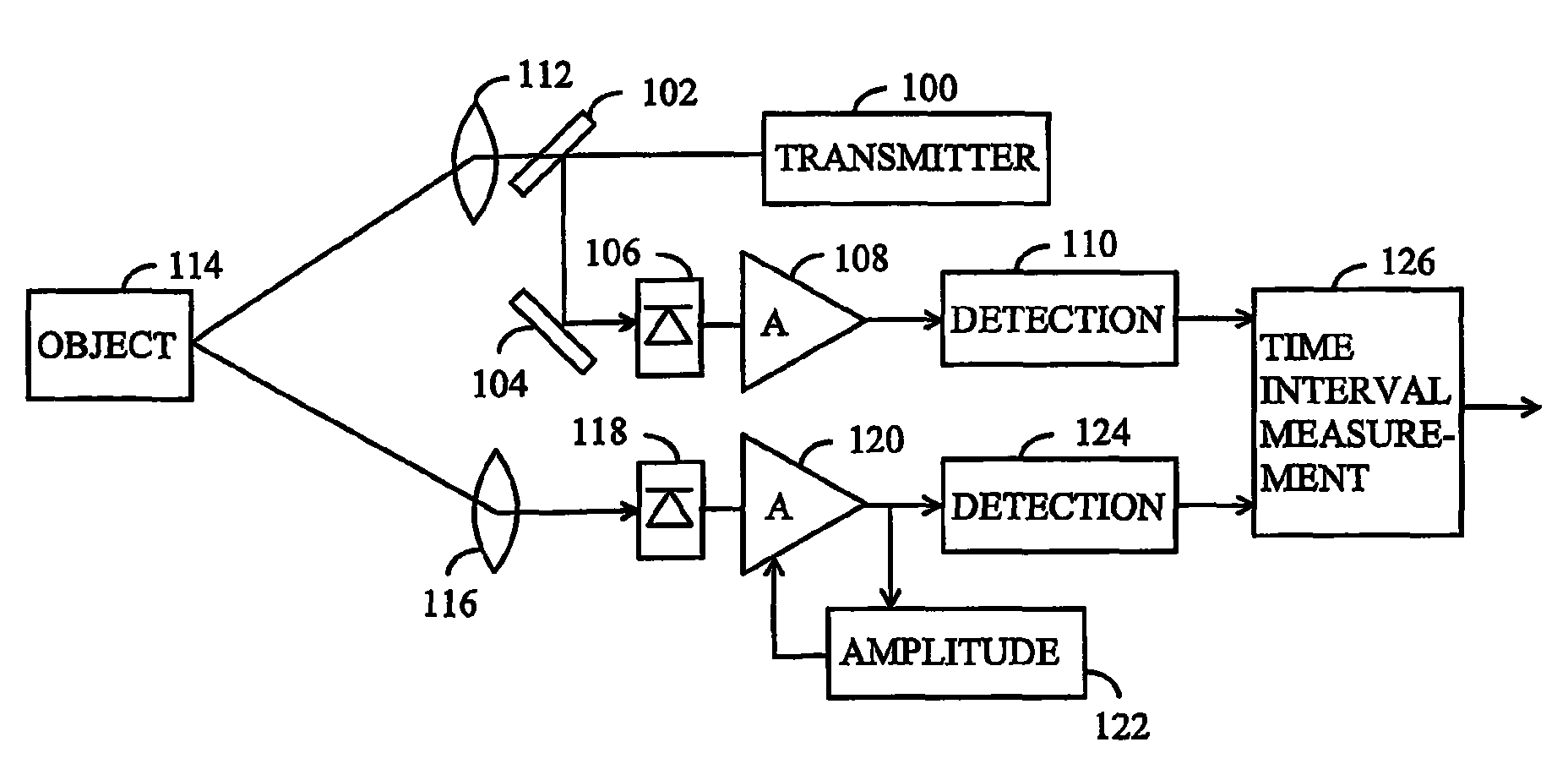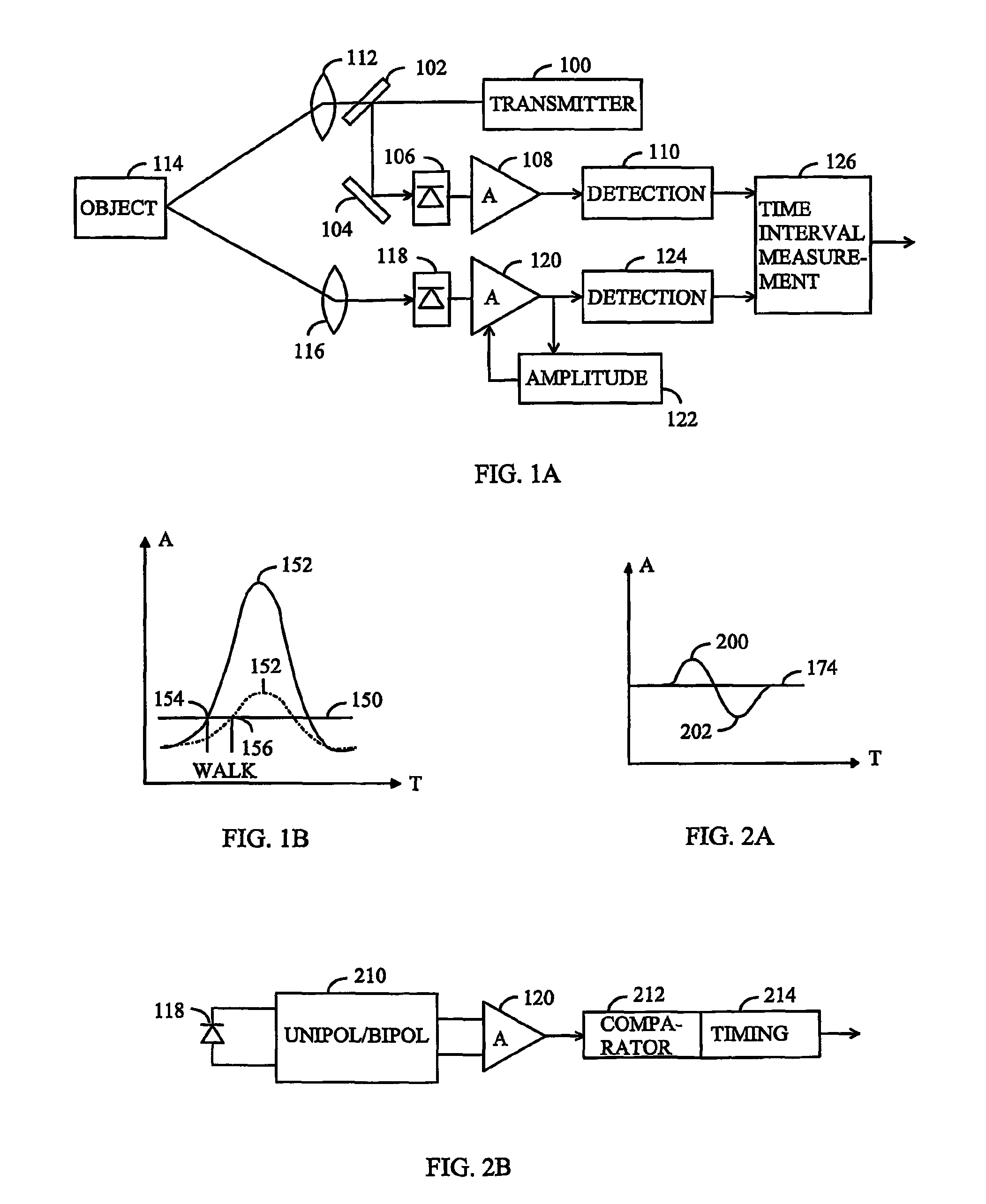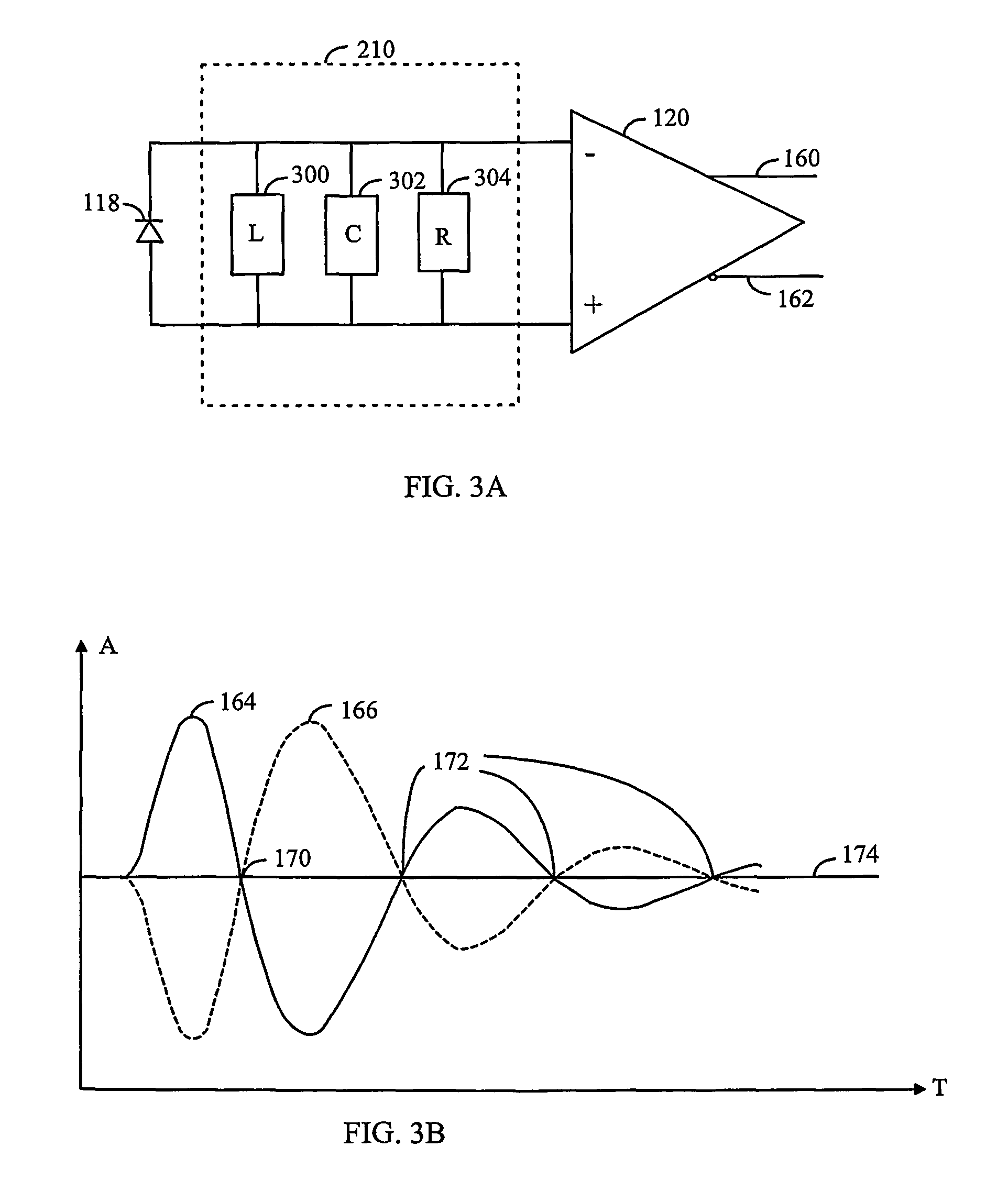Method and arrangement for performing triggering and timing of triggering
a technology of triggering and timing, applied in the direction of distance measurement, pulse technique, instruments, etc., can solve the problems of inability to convert significant errors in the measurement of the time between the transmitted pulse and the received pulse, and inability to achieve the effect of converting a pulse to bipolar, so as to improve the measurement accuracy of the solution and the determination of the exact triggering momen
- Summary
- Abstract
- Description
- Claims
- Application Information
AI Technical Summary
Benefits of technology
Problems solved by technology
Method used
Image
Examples
Embodiment Construction
[0022]The solution presented is applicable for instance in a distance measurement device based on the propagation time of an optical pulse or in nuclear technological measurement devices, without, however, being restricted thereto.
[0023]Let us now study a distance measurement device based on the propagation time of an optical pulse by means of FIG. 1. In the present application, optical radiation refers to electromagnetic radiation at wavelengths between 40 nm to 1 mm. The distance measurement device comprises an optical pulse transmitter 100, which may be a laser, led or other device for transmitting optical pulses. The kind of device involved is not essential to the solution presented. The duration of an optical pulse may be for instance some nanoseconds (5 ns to 10 ns), but the solution presented is not either restricted to the duration of the pulse. A pulse transmitted by the transmitter 100 is directed to a detector 106 by using a partially transparent mirror 102 and mirror 104...
PUM
 Login to View More
Login to View More Abstract
Description
Claims
Application Information
 Login to View More
Login to View More - R&D
- Intellectual Property
- Life Sciences
- Materials
- Tech Scout
- Unparalleled Data Quality
- Higher Quality Content
- 60% Fewer Hallucinations
Browse by: Latest US Patents, China's latest patents, Technical Efficacy Thesaurus, Application Domain, Technology Topic, Popular Technical Reports.
© 2025 PatSnap. All rights reserved.Legal|Privacy policy|Modern Slavery Act Transparency Statement|Sitemap|About US| Contact US: help@patsnap.com



